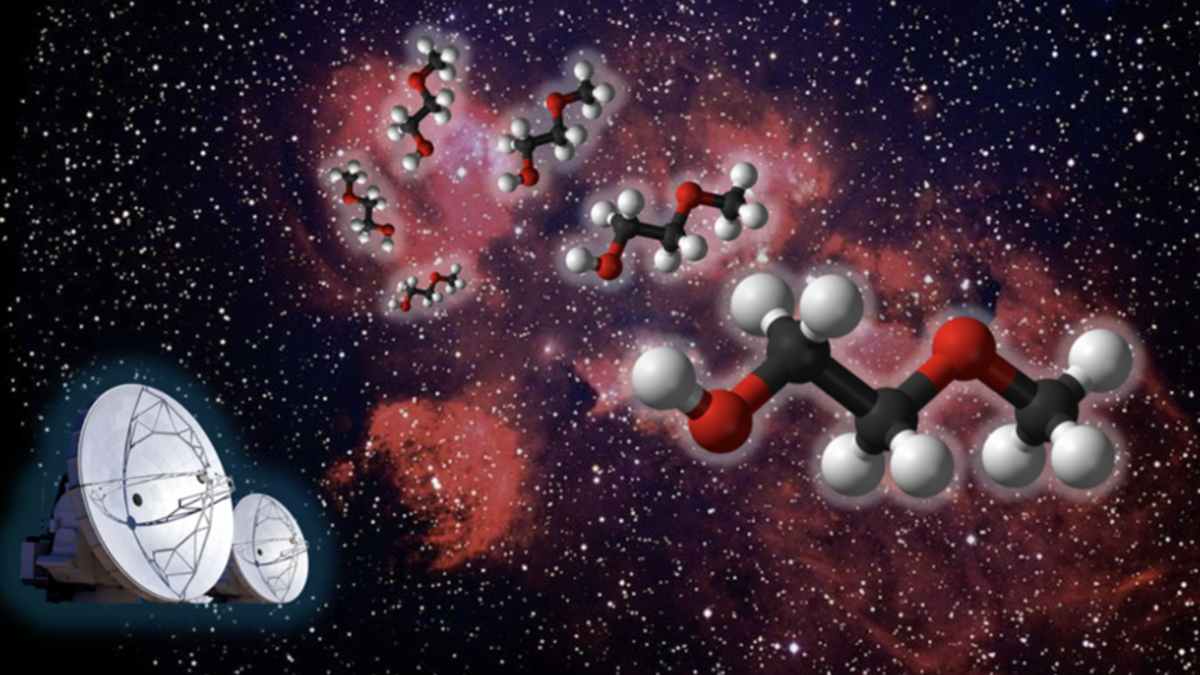Para astronom akan melatih spektrometer Webb resolusi tinggi pada dua eksoplanet berbatu yang menarik.
Bayangkan bahwa Bumi lebih dekat ke Matahari. Begitu dekat sehingga satu tahun penuh hanya akan berlangsung beberapa jam. Gravitasi ini mengunci satu belahan bumi ke dalam siang bolong yang terik dan yang lainnya ke dalam kegelapan abadi. Jadi, lautan mendidih, bebatuan mulai mencair, dan lava turun dari awan.
Meskipun tidak ada yang seperti ini di tata surya kita, planet seperti itu — berbatu, seukuran Bumi, sangat panas dan dekat dengan bintangnya — tidak jarang di tata surya kita.[{” attribute=””>Milky Way galaxy.
What are the surfaces and atmospheres of these planets really like? NASA’s James Webb Space Telescope is about to provide some answers.
Illustration showing what exoplanet LHS 3844 b could look like, based on current understanding of the planet.
LHS 3844 b is a rocky planet with a diameter 1.3 times that of Earth orbiting 0.006 astronomical units from its cool red dwarf star. The planet is hot, with dayside temperatures calculated to be greater than 1,000 degrees Fahrenheit (greater than about 525 degrees Celsius). Observations of the planet’s thermal emission spectrum using Webb’s Mid-Infrared Instrument (MIRI) will provide more evidence to help determine what the surface is made of. Credit: NASA, ESA, CSA, Dani Player (STScI)
Geology from 50 Light-Years: Webb Gets Ready to Study Rocky Worlds
With its mirror segments beautifully aligned and its scientific instruments undergoing calibration, NASA’s James Webb Space Telescope (Webb) is just weeks away from full operation. Soon after the first observations are revealed this summer, Webb’s in-depth science will begin.
Included in the investigations planned for the first year are studies of two hot exoplanets classified as “super-Earths” for their size and rocky composition: the lava-covered 55 Cancri e and the airless LHS 3844 b. Scientists will train Webb’s high-precision spectrographs on these planets with a view to understanding the geologic diversity of planets across the galaxy, as well as the evolution of rocky planets like Earth.
Super-Hot Super-Earth 55 Cancri e
55 Cancri e orbits less than 1.5 million miles from its Sun-like star (one twenty-fifth of the distance between Mercury and the Sun), completing one circuit in less than 18 hours. With surface temperatures far above the melting point of typical rock-forming minerals, the day side of the planet is thought to be covered in oceans of lava.

Illustration comparing rocky exoplanets LHS 3844 b and 55 Cancri e to Earth and Neptune. Both 55 Cancri e and LHS 3844 b are between Earth and Neptune in terms of size and mass, but they are more similar to Earth in terms of composition.
The planets are arranged from left to right in order of increasing radius.
Image of Earth from the Deep Space Climate Observatory: Earth is a warm, rocky planet with a solid surface, water oceans, and a dynamic atmosphere.
Illustration of LHS 3844 b: LHS 3844 b is a hot, rocky exoplanet with a solid, rocky surface. The planet is too hot for oceans to exist and does not appear to have any significant atmosphere.
Illustration of 55 Cancri e: 55 Cancri e is a rocky exoplanet whose dayside temperature is high enough for the surface to be molten. The planet may or may not have an atmosphere.
Image of Neptune from Voyager 2: Neptune is a cold ice giant with a thick, dense atmosphere.
The illustration shows the planets to scale in terms of radius, but not location in space or distance from their stars. While Earth and Neptune orbit the Sun, LHS 3844 b orbits a small, cool red dwarf star about 49 light-years from Earth, and 55 Cancri e orbits a Sun-like star roughly 41 light-years away. Both are extremely close to their stars, completing one orbit in less than a single Earth day.
Credit: NASA, ESA, CSA, Dani Player (STScI)
Planets that orbit this close to their star are assumed to be tidally locked, with one side facing the star at all times. As a result, the hottest spot on the planet should be the one that faces the star most directly, and the amount of heat coming from the day side should not change much over time.
But this doesn’t seem to be the case. Observations of 55 Cancri e from NASA’s Spitzer Space Telescope suggest that the hottest region is offset from the part that faces the star most directly, while the total amount of heat detected from the day side does vary.
Does 55 Cancri e Have a Thick Atmosphere?
One explanation for these observations is that the planet has a dynamic atmosphere that moves heat around. “55 Cancri e could have a thick atmosphere dominated by oxygen or nitrogen,” explained Renyu Hu of NASA’s Jet Propulsion Laboratory in Southern California, who leads a team that will use Webb’s Near-Infrared Camera (NIRCam) and Mid-Infrared Instrument (MIRI) to capture the thermal emission spectrum of the day side of the planet. “If it has an atmosphere, [Webb] Hal ini ditandai dengan sensitivitas dan rentang panjang gelombang untuk deteksi dan identifikasi komponennya.”
Atau mungkin lahar di 55 Cancri E di malam hari?
Namun, kemungkinan menarik lainnya adalah 55 Cancri e tidak dikunci dengan bezel. Atau, bisa seperti Merkurius, berputar tiga kali dalam dua orbit (yang dikenal sebagai resonansi 3:2). Akibatnya, planet ini akan memiliki siklus siang dan malam.
“Ini mungkin menjelaskan mengapa bagian terpanas dari planet ini berputar,” jelas Alexis Brandecker, seorang peneliti di Universitas Stockholm yang memimpin tim lain yang mempelajari planet ini. “Sama seperti di Bumi, permukaan akan membutuhkan waktu untuk memanas. Waktu terpanas dalam sehari adalah siang, bukan siang.”

Spektrum emisi termal LHS 3844b di luar tata surya panas yang diukur dengan Instrumen Inframerah Tengah Webb. Spektrum emisi termal menunjukkan jumlah cahaya dari berbagai panjang gelombang inframerah (warna) yang dipancarkan oleh planet ini. Para ilmuwan menggunakan model komputer untuk memprediksi seperti apa spektrum emisi panas planet dalam kondisi tertentu, seperti atmosfer dan komposisi permukaan planet.
Simulasi khusus ini mengasumsikan bahwa LHS 3844 b tidak memiliki atmosfer dan sisi siang hari tertutup batuan beku gelap. (Basalt adalah batuan beku paling umum di tata surya kita, membentuk pulau-pulau vulkanik seperti Hawaii dan sebagian besar dasar laut Bumi, serta sebagian besar permukaan Bulan dan Mars.)
Sebagai perbandingan, garis abu-abu menunjukkan spektrum khas batuan basal berdasarkan pengukuran laboratorium. Garis merah muda adalah spektrum granit, yang merupakan batuan beku paling umum yang ditemukan di benua Bumi. Kedua jenis batuan ini memiliki spektrum yang sangat berbeda karena terbuat dari mineral yang berbeda yang menyerap dan memancarkan jumlah cahaya yang berbeda pada panjang gelombang yang berbeda.
Setelah Webb menemukan planet ini, para ilmuwan akan membandingkan spektrum model sebenarnya dari berbagai jenis batuan, seperti yang satu ini, untuk melihat terbuat dari apa permukaan planet itu.
Kredit Gambar: NASA, ESA, CSA, Dani Player (STScI), Laura Kreidberg (MPI-A), Renyu Hu (NASA-JPL)
Tim Brandeker berencana untuk menguji hipotesis ini menggunakan kamera NIRCam untuk mengukur panas yang dipancarkan oleh sisi terang 55 Cancri melalui empat orbit yang berbeda. Jika sebuah planet memiliki gema 3:2, mereka akan mengamati kedua belahan dua kali dan seharusnya dapat mendeteksi perbedaan antara kedua belahan.
Dalam skenario ini, permukaan akan memanas, meleleh, dan bahkan menguap di siang hari, menciptakan atmosfer yang sangat tipis yang bisa dideteksi Webb. Di malam hari, uap mendingin dan mengembun membentuk tetesan lava yang mengalir kembali ke permukaan, menjadi padat lagi saat malam tiba.
Super Earth LHS 3844 sedikit lebih keren
Sementara 55 Cancri e akan memberikan wawasan tentang geologi khas dunia yang tertutup lava, LHS 3844 B Memberikan kesempatan unik untuk analisis batuan keras[{” attribute=””>exoplanet surface.
Like 55 Cancri e, LHS 3844 b orbits extremely close to its star, completing one revolution in 11 hours. However, because its star is relatively small and cool, the planet is not hot enough for the surface to be molten. Additionally, Spitzer observations indicate that the planet is very unlikely to have a substantial atmosphere.
What Is the Surface of LHS 3844 b Made of?
While we won’t be able to image the surface of LHS 3844 b directly with Webb, the lack of an obscuring atmosphere makes it possible to study the surface with spectroscopy.
“It turns out that different types of rock have different spectra,” explained Laura Kreidberg at the Max Planck Institute for Astronomy. “You can see with your eyes that granite is lighter in color than basalt. There are similar differences in the infrared light that rocks give off.”
Kreidberg’s team will use MIRI to capture the thermal emission spectrum of the day side of LHS 3844 b, and then compare it to spectra of known rocks, like basalt and granite, to determine its composition. If the planet is volcanically active, the spectrum could also reveal the presence of trace amounts of volcanic gases.
The importance of these observations goes far beyond just two of the more than 5,000 confirmed exoplanets in the galaxy. “They will give us fantastic new perspectives on Earth-like planets in general, helping us learn what the early Earth might have been like when it was hot like these planets are today,” said Kreidberg.
These observations of 55 Cancri e and LHS 3844 b will be conducted as part of Webb’s Cycle 1 General Observers program. General Observers programs were competitively selected using a dual-anonymous review system, the same system used to allocate time on Hubble.
The James Webb Space Telescope is the world’s premier space science observatory. Webb will solve mysteries in our solar system, look beyond to distant worlds around other stars, and probe the mysterious structures and origins of our universe and our place in it. Webb is an international program led by NASA with its partners, ESA (European Space Agency) and the Canadian Space Agency.

“Creator. Award-winning problem solver. Music evangelist. Incurable introvert.”






More Stories
Tìm hiểu về HMI và cách sử dụng
Bayonetta 3 – Penyihir mendapat filter telanjang
Apple tidak mengakui kesalahan tentang membangun komputer dengan M2